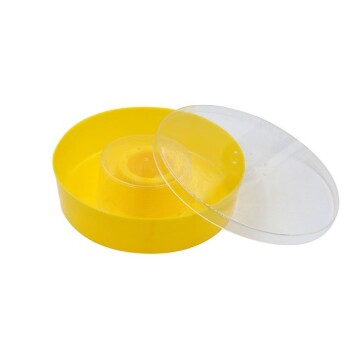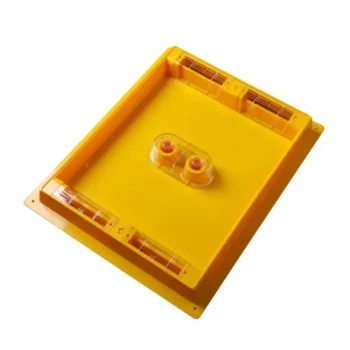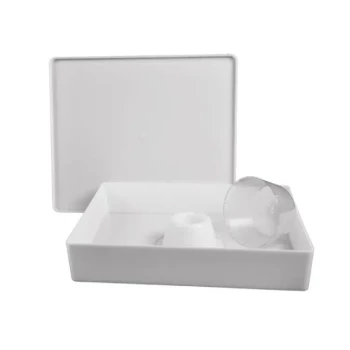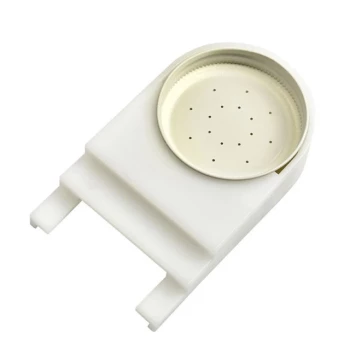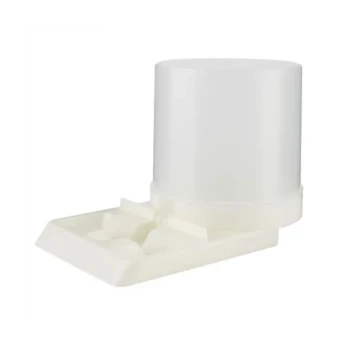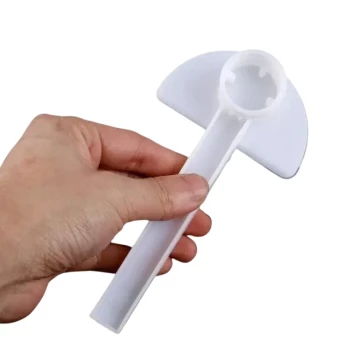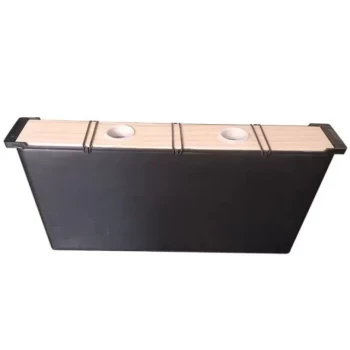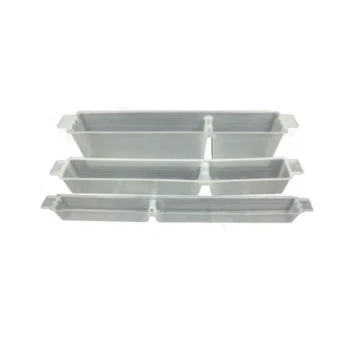At its core, a hive top feeder is a reservoir that sits on top of your hive, functioning like a self-service cafeteria for your bees. It is designed to provide a large volume of sugar syrup while protecting the colony from outside threats and minimizing disturbance from the beekeeper. Bees travel upward from the hive body into a protected chamber within the feeder to access the syrup.
A hive top feeder's true purpose is not just to hold liquid, but to provide high-capacity, low-disturbance feeding. It intelligently leverages the hive's own heat to keep syrup accessible, making it an essential tool for strategic colony management.
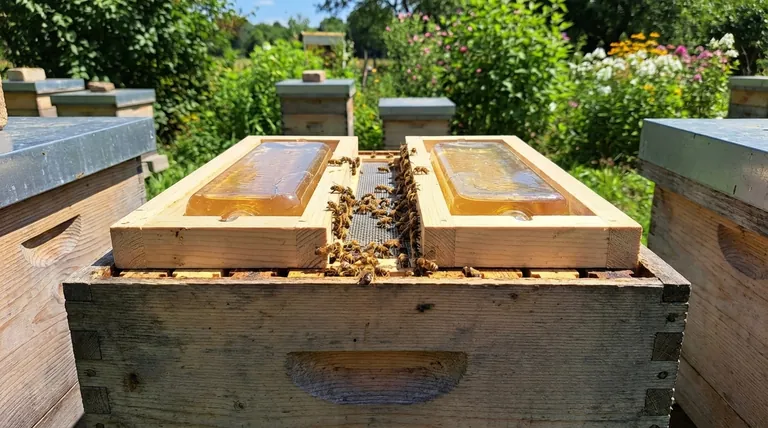
The Core Mechanics: How Bees Access the Syrup
Understanding how a hive top feeder works is about understanding how it separates the bees' living space from their food source while still providing safe, easy access.
The Feeder's Position
A hive top feeder is placed directly on top of the uppermost hive box, often replacing the standard inner cover. The entire unit is then protected by an empty hive box and the telescoping outer cover.
This placement is strategic. It allows the beekeeper to refill the feeder simply by removing the outer cover, without having to "break open" the hive and disturb the brood nest.
The Access Channel
The key to any top feeder is the channel that allows bees to leave the hive and enter the feeding area. The bees climb up from the top bars of the frames into the feeder.
Most designs have a central channel or screen that prevents the bees from getting into the main syrup reservoir and drowning. They are restricted to a specific access point.
Two Common Feeder Designs
While the principle is the same, you will typically encounter two main designs:
- The Reservoir Feeder: This common wooden or plastic design has a central channel where bees climb up. They then go over a small wall and down a screened ladder or textured ramp into the troughs of syrup on either side. This design keeps the bees separate from the main liquid body, drastically reducing drowning.
- The Inverted Jar Feeder: This simpler method involves placing a standard hive inner cover on the hive. A glass jar filled with syrup, its lid punched with tiny holes, is inverted over the hole in the inner cover. The vacuum pressure prevents the syrup from pouring out, and bees access it by drinking from the small holes.
Key Advantages of a Hive Top Feeder
Beekeepers choose this method for several distinct and powerful reasons that go beyond simply delivering sugar.
High Syrup Capacity
Top feeders hold the most syrup of any feeder type, often one to four gallons. This is ideal for heavy feeding situations, as it dramatically reduces the labor and frequency of refills.
Minimal Hive Disturbance
Because the feeder can be checked and refilled from the top without exposing the frames, it is the least disruptive method. This reduces colony stress, especially during cool or defensive periods.
Protection from Robbing
The enclosed design is a critical feature. It contains the scent of syrup and makes it nearly impossible for robber bees from other colonies to find and access the food source, preventing a potentially devastating hive conflict.
Leveraging Hive Heat
By sitting directly on the brood nest, the feeder benefits from the colony's radiant heat. This warmth keeps the syrup from crystallizing in cool weather, ensuring the bees can consume it when they need it most.
Understanding the Trade-offs and Pitfalls
While highly effective, hive top feeders are not without their challenges. Objectivity requires acknowledging their limitations.
The Risk of Drowning
In poorly designed or homemade feeders, bees can find their way into the main syrup reservoir and drown in large numbers. Always choose a feeder with a reliable screen, ladder, or floats (like wood chips or corks) to provide a safe landing for the bees.
Potential for Leaks
A poorly constructed or damaged feeder can leak syrup down into the hive. This can chill the brood, attract pests, and create a sticky mess for both the bees and the beekeeper. Ensure your feeder is well-sealed and sits flat on the hive.
Slower Initial Uptake
Compared to an in-frame feeder placed directly beside the brood, a top feeder requires bees to travel farther for food. For a brand new, small colony, this extra distance might slightly slow their initial rate of consumption.
Making the Right Choice for Your Goal
Selecting a feeder depends entirely on what you are trying to accomplish with your colony.
- If your primary focus is building up a new colony: A top feeder provides the steady, continuous food source new bees need to draw out fresh comb.
- If your primary focus is heavy fall feeding for winter: The hive top feeder is the undisputed best choice due to its massive capacity and thermal benefits.
- If your primary focus is convenience and minimizing inspections: The top feeder's design allows you to feed your colony without putting on a bee suit, making it the most convenient option available.
Ultimately, understanding how a hive top feeder works empowers you to use it as a strategic tool for building a strong, healthy, and productive colony.
Summary Table:
| Feature | Benefit |
|---|---|
| High Capacity | Holds 1-4 gallons, reducing refill frequency |
| Minimal Disturbance | Refill from the top without opening the brood nest |
| Robbing Protection | Enclosed design contains syrup scent |
| Thermal Efficiency | Uses hive heat to prevent syrup crystallization |
| Common Designs | Reservoir feeder, Inverted jar feeder |
Equip your apiary with professional-grade feeding solutions from HONESTBEE.
We supply durable, well-designed hive top feeders and other essential beekeeping supplies to commercial apiaries and equipment distributors through our wholesale-focused operations. Ensure your colonies have reliable, high-capacity nutrition to build strength and maximize productivity.
Contact HONESTBEE today to discuss your wholesale needs and discover how our equipment can support your beekeeping success.
Visual Guide
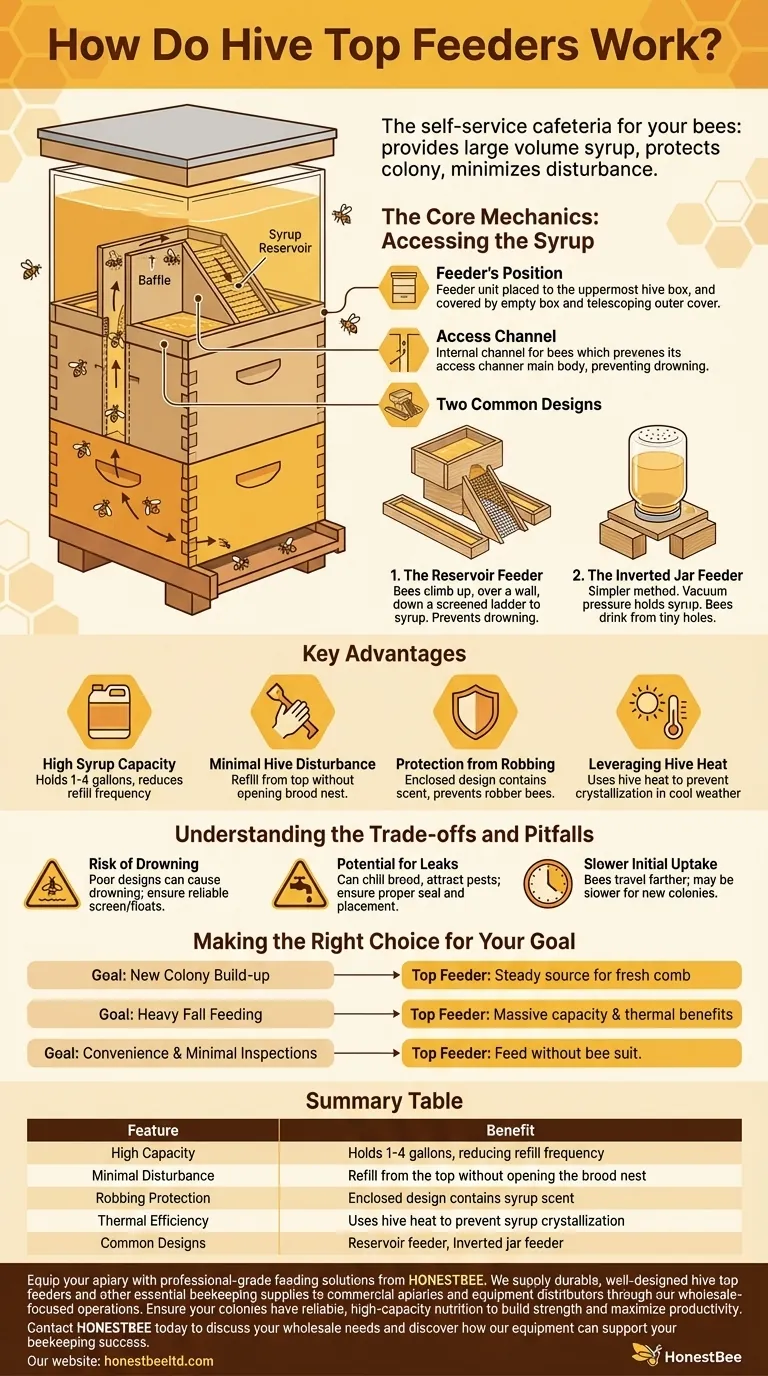
Related Products
- HONESTBEE Round Hive Top Bee Feeder for Syrup
- Professional Hive Top Bee Feeder for Beekeeping
- HONESTBEE Professional Hive Top Bee Feeder Feeding Solution
- Rapid Bee Feeder White Plastic 2L Round Top Feeder for 8 or 10-Frame Bee Hives
- Classic Boardman Entrance Bee Feeder Hive Front Feeding Solution
People Also Ask
- What can the round hive top feeder be used for? A Guide to Efficient, Safe Bee Feeding
- Why is a top feeder essential for bees? Ensure Colony Health and Efficiency
- How should syrup for bees be prepared? Master the Ratio for a Thriving Hive
- What are the features of top feeders for bees? Maximize Hive Health with Safe, High-Capacity Feeding
- What features make top feeders a reliable choice for beekeepers? A Guide to Safe, Efficient Hive Nutrition
